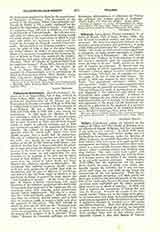

Villers, Cistercian Abbey of, situated on the confines of Villers and Tilly, Duchy of Brabant, present Diocese of Namur (Belgium), and first monastery of the order in this territory. In April, 1146 (most probably), St. Bernard sent twelve monks and five lay-brothers from Clairvaux, under the direction of Abbot Lawrence, to establish themselves at Boverie, from whence, after over a year of struggle against discouragement and failure, they transferred their monastery to a more suitable location, about three miles distant, where a modest oratory and dwelling were soon erected. The early years were replete with sufferings for the new community, but little by little, as it became known, the nobles of the vicinity came to its aid with material assistance. Abbot Charles (1197-1209) laid the foundations for the magnificent church, the ruins of which even today profoundly impress the beholder, but it was not completed until about the year 1300; he also began the construction of the new monastery. With the increase of temporal prosperity, and their minds free from such anxieties, the spiritual growth of the members of the community became the more remarkable; vocations were multiplied and the abbey attained great renown as an abode of sanctity. In 1231 and 1238 it founded the monasteries of Grand Pre and Lieu St. Bernard. Towards the middle of the thirteenth century Villers was at the height of its glory; its revenues were very large, both spiritual and temporal powers regarded it with the greatest favor, and it numbered amongst its members over 100 monks and 300 lay-brothers. More than 50 monks and lay-brothers, who lived during this period, are honored as saints and Blessed in the Order of Citeaux. Prominent amongst these were its first thirteen abbots, especially Gerard I, who died Bishop of Tournai (1166), and Conrad de Seyne, who died Cardinal–Bishop of Porto. Gradually the selection of the abbots became the prerogative of the sovereign, and the monastery suffered from the intrusion of unworthy prelates; it also suffered from political disorders, so that at one time the ‘entire community were obliged to quit the abbey for nearly twenty years. In 1776 the community still numbered 54 monks and May-brothers, but shortly afterwards (1796) the abbey fell under the law of suppression. Later on the Belgian Government purchased the ruins, restored them and preserves them as a monument of the historic past.
EDMOND M. OBRECHT

